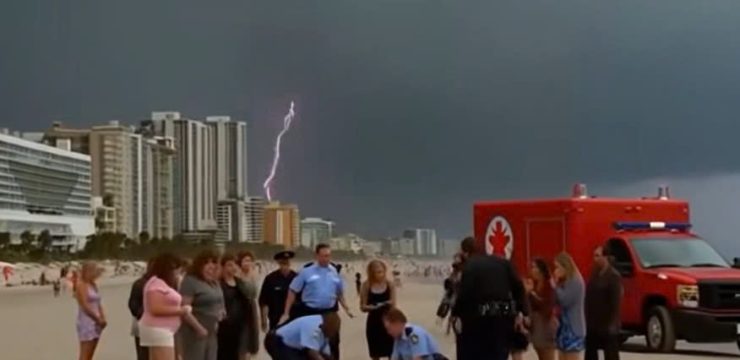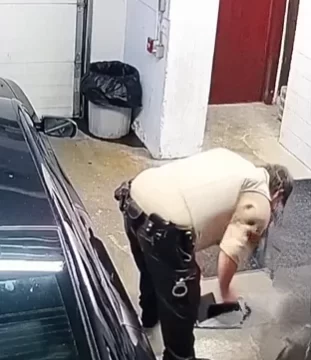Mexico City is grappling with one of the most devastating road disasters in its history after a liquefied petroleum gas (LPG) tanker overturned and exploded on the Iztapalapa–Chalco highway, sending a fireball through the air that consumed vehicles, destroyed property, and left dozens dead or severely injured. The tragic incident, which took place on September 10, 2025, turned an otherwise ordinary commute into a scene of fear and chaos.

Witnesses described hearing a thunderous explosion followed by a searing wave of heat that forced drivers to abandon their cars and flee on foot. A towering column of black smoke could be seen from miles away, and within minutes, graphic videos of the inferno flooded social media, sparking outrage and heartbreak across the nation. Authorities confirmed the tanker was hauling more than 13,000 gallons of LPG, an extremely flammable fuel widely used in homes and businesses across Mexico. While traveling along the busy highway that runs through the eastern edge of the capital, the driver apparently lost control of the vehicle. The tanker overturned, its tank ruptured, and the leaked gas ignited in a matter of moments. Flames quickly engulfed nearby cars and motorcycles, trapping some commuters and sending others running for their lives.
People who were caught in heavy traffic could only watch in horror as the massive tanker burst into flames, igniting everything around it. Firefighters and emergency crews rushed to the scene and battled the blaze for several hours. Their focus was not only to control the fire but also to prevent further explosions as burning vehicles piled up near the wreck. Roads in the area were closed immediately, causing citywide traffic jams but allowing rescue workers the space they needed to evacuate survivors and provide first aid. The human toll has been staggering. Initial reports mentioned three fatalities, but updated figures revealed at least 15 confirmed deaths and more than 70 injuries.
Many victims suffered severe burns requiring urgent surgeries and long-term medical care. Hospitals across Mexico City were overwhelmed as ambulances delivered patients in critical condition, and doctors scrambled to provide lifesaving treatment. Beyond the loss of life, property damage was catastrophic. More than 30 vehicles were incinerated or left mangled on the asphalt, their twisted metal skeletons scattered across the highway. The sheer intensity of the explosion shattered windows and caused structural damage to homes and businesses nearby, amplifying the scope of the disaster. Authorities have launched a full investigation to determine the exact cause of the crash.
Officials are reviewing whether driver error, excessive speed, or mechanical failure played a role. Early indications suggest the tanker may not have carried proper insurance or the required safety permits to haul hazardous cargo, raising troubling questions about enforcement and accountability. “This was not just a tragic accident—it may have been preventable,” a city transportation official stated. “If negligence or violations are uncovered, those responsible will be held accountable.” The community is in shock. Residents near the blast site described their homes shaking as though struck by an earthquake. Fearing more explosions, many families fled their homes, unsure if it was safe to return.
Anger has grown alongside grief, with locals demanding tougher rules on the movement of dangerous materials through densely populated areas. “We live right next to this highway,” one resident told reporters. “Every day these trucks pass by. It could happen again tomorrow. We can’t live with this danger over our heads.” City officials are now considering rerouting tankers away from neighborhoods and residential zones, while safety advocates are pushing for mandatory vehicle inspections, enhanced driver training, and stricter documentation for hazardous cargo. Experts stress that the explosion underscores the urgent need for reforms, including tougher inspections to guarantee that vehicles are mechanically sound, specialized training for drivers on how to respond to rollovers and fuel leaks, clear policies to reroute tankers away from populated areas, and improved emergency response systems so cities can handle disasters faster and more effectively.
Analysts note that Mexico has experienced multiple accidents involving fuel transport in recent years, often linked to poor enforcement of safety laws. They argue that this tragedy should be the wake-up call that forces the government and private companies to finally prioritize safety over convenience or profit. For grieving families, however, reforms will come too late. Dozens of households are now mourning lost loved ones, while others sit anxiously at hospital bedsides. Community groups have stepped in to provide help, organizing blood drives, medical supply donations, and fundraising efforts for victims and their families. On a national level, leaders have promised accountability, but many citizens remain skeptical.
“Every time they say the same thing—that changes are coming,” one witness said. “But people keep dying, and nothing ever changes.” The Mexico City tanker explosion is more than just a traffic accident. It is a stark reminder of the dangers of transporting hazardous materials through crowded cities and the devastating consequences when safety is overlooked.
Even as the fires are extinguished and roads eventually reopen, the scars—physical, emotional, and communal—will linger for years. The black smoke may have drifted away, but the memory of September 10, 2025, will remain etched in the collective conscience of Mexico City, a painful testament to lives lost, lessons learned too late, and a call to action that can no longer be ignored.





